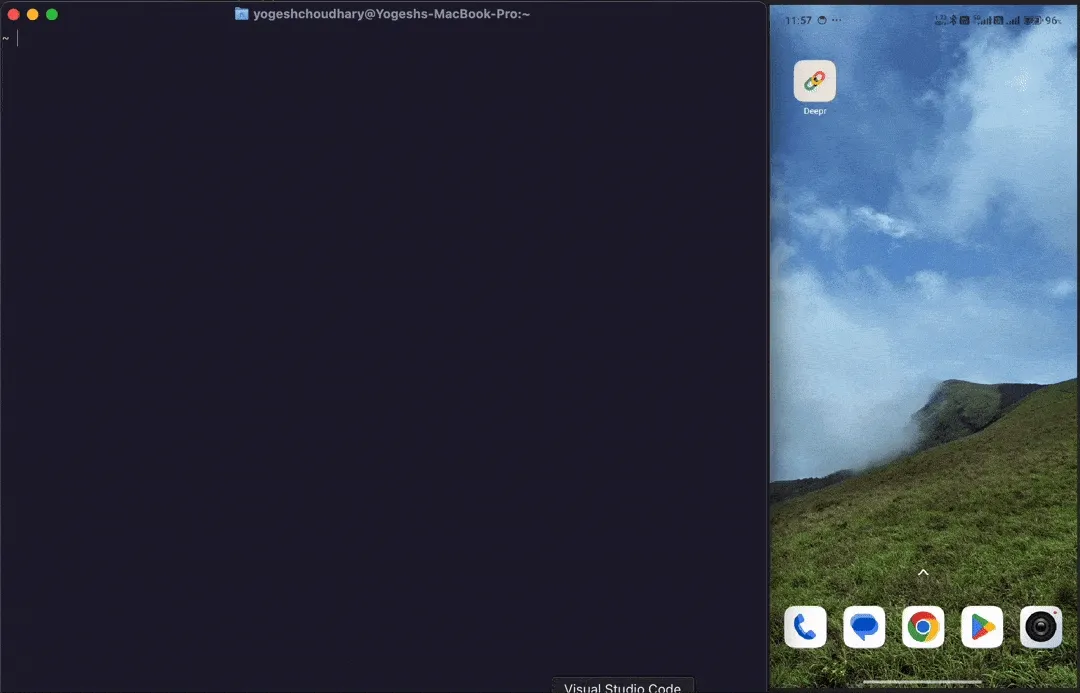📜 Context
Deeplinks are essential for navigating within Android applications, but managing them can be cumbersome, especially when dealing with a long list.
This quick tip will help you manage your ADB deeplinks from the terminal.
This solution leverages fzf, a powerful command-line fuzzy finder, to make deeplink selection intuitive.
Table of Content
Solution
-
Install fzf (Ignore this if you already have it installed)
- For MacOS, you can use Homebrew:
brew install fzf - For Linux, you can follow the instructions on the fzf GitHub page.
- For MacOS, you can use Homebrew:
-
Add the code below to the end of your
.zshrcfile. Use the commandvim ~/.zshrcto open the file in your terminal.
adbl() {
# Check if fzf is installed
if ! command -v fzf &> /dev/null; then
echo "Error: fzf is not installed. Please install it to use this function."
echo "e.g., brew install fzf"
return 1
fi
local HISTORY_FILE=~/.adbl_history
# Create the history file if it doesn't exist
touch "$HISTORY_FILE"
local uri
# If an argument is passed, use it directly.
if [ -n "$1" ]; then
uri="$1"
else
# Otherwise, show the fzf history selector.
# --print-query prints the query and then the selection.
# We take the last line of the output (`tail -n 1`), which is the selection
# if one is made, or the query itself if the user just presses Enter.
uri=$(fzf --tac --height 40% --border --prompt="Select or type a new deeplink > " \
--header="[Enter] to select, [Esc] to cancel." \
--print-query < "$HISTORY_FILE" | tail -n 1)
fi
# Exit if the user cancelled fzf or the URI is empty
if [ -z "$uri" ]; then
echo "No deeplink selected."
return 1
fi
# Execute the adb command
echo "Executing: adb shell am start -W -a android.intent.action.VIEW -d \"$uri\""
adb shell am start -W -a android.intent.action.VIEW -d "$uri"
# If the command was successful, save the URI to history (if it's not already there)
if [ $? -eq 0 ]; then
# Use grep to check if the exact line already exists
if ! grep -q -F -x "$uri" "$HISTORY_FILE"; then
echo "$uri" >> "$HISTORY_FILE"
fi
fi
}
- Reload your terminal or run
source ~/.zshrcto apply the changes.
Usage
Inline Usage
You can now use the adbl command to manage your ADB deeplinks:
adbl <your_deeplink>
This command executes the provided deeplink and saves it to a history file for future use.

Interactive Usage
If you run adbl without any arguments, it will show a list of previously used deeplinks using fzf, allowing you to select one or type a new one.

If you select a deeplink, it will internally execute this command:
adb shell am start -W -a android.intent.action.VIEW -d “<selected_deeplink>“
⚠️ Things to keep in mind
- Ensure that you have
adbinstalled and your device is connected. - The history file is stored at
~/.adbl_history, and you can view or edit it if needed. - If you want to clear the history, you can simply delete the
~/.adbl_historyfile. - If you want to use this command in a different shell (like
bash), you may need to adjust the syntax accordingly. - If you are connecting a multiple android devices you can refer to this blog post here by theApache64.
Bonus
If you want to manage your deeplinks in an Android device, you can use Deepr
📒 Conclusions
By using this command, you can easily manage and execute ADB deeplinks directly from your terminal, making it more efficient to test and navigate within your Android applications.